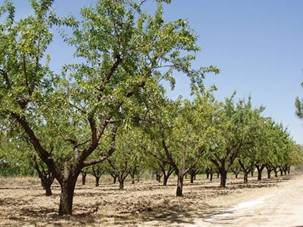2nd Century BC to 710 AD.
While Cordoba is known as the ‘City of the Caliphate’, its story begins many years before Islam arrived in the Iberian Peninsula. Like most of Spain, during the 3rd century BC, the settlement that would become Cordoba was colonized by the Carthaginians. Following the Second Punic War, like most of the Carthage’s colonies, it was annexed by the Romans (they had a habit of doing that). It would be thoroughly Romanized over the following centuries; it wasn’t Roman enough to some, as it was sacked by Julius Caesar in 45 BC and settled by soldiers of Augustus after he won the civil wars that followed Caesar’s murder. Starting in the 2,000s BC, olives had been cultivated in the region around Cordoba, and this would only continue under the Romans and grown even more into a massive operation. By the late 500s AD, that region of Spain would be conquered by the Visigoths.

711 AD to the 10th Century AD.
In 711 AD Cordoba was captured by the Umayyads and soon the city became the jewel of the Islam in that corner of their world. When the Umayyads were overthrown by the Abbasids in 750, one of the last surviving members of the Umayyad Family, Abd Al-Rahman the First. He declared the Emirate in 756. Over the next 25 years Rahman would go on to conquer all of the other petty rulers known as the Fihrids that had existed in the Peninsula (there can only be one!) Over time the Emirate would fall into somewhat of a decline, but in 912 a new Emir would rise to restore the might of the Emirate, Abd Ar-Rahman the Third. He would go on to launch a myriad of campaigns to restore the central authority of Cordoba. In 929 he would declare himself Caliph, being the third Caliph in the Islamic world along with the remnants of the Abbasids in Baghdad and Fatimids in Cairo. (A counter Caliphate if you would).

10th Century to the 12th Century AD.
Throughout most of Cordoba’s history under Muslim rule was the focal point for the flax and silk trade in Iberia. Naturally it was also a titan in the textile industry. Textiles were not the only thing it was well known for, as with much of the Islamic World, its many libraries and being a center of learning. At its academic zenith, the city boasted up to 80 libraries and produced many notable Islamic mathematicians, scholars, and historians. Over time the population of the city also begin to grow steadily and by 1000 AD the city had well over one-million people living within its walls. Overtime due to political infighting and widespread instability in the Caliphate, the region would facture into several smaller state. At this time, several rulers would integrate Jewish and Christian advisors. Due to the somewhat lax nature that had fallen over the Caliphate in terms of obeying Islamic Law, chiefly by being more tolerant to other religion, allowing music, and allowing the consumption of alcohol. Additionally, weakness politically and fracturing into smaller the Taifa kingdoms, Al-Andalus would be invaded by the Almoravids of Morocco in the late 11th Century AD who were stricter in their interpretations and practicing of Islam.
Sources organized in tandem with the events listed above:
Keay, J. Simon. ‘Oxford Classical Dictionary’ Oxford University Press (2020) Page 374.
Link: The Oxford Classical Dictionary – Google Books
Collin, Roger ‘Visogothic Spain: 409-711’ Blackwell Publishing (2004) Page 134.
Link: Visigothic Spain 409–711
O’Callaghan, Joseph ‘A History of Medieval Spain’ Cornell University Press (1975) Pages 100-101.
link: ProQuest Ebook Central – Reader
“Muslim Spain (711-1492)” BBC (2009).
Link: BBC – Religions – Islam: Muslim Spain (711-1492)
Kennedy, Hugh ‘Muslim Spain and Portugal: A Political History of Al-Andalus’ Routledge (1996). Pages 82-94, 154-165 (for Almoravid Conquest), and 196-200 (for Almohads).
